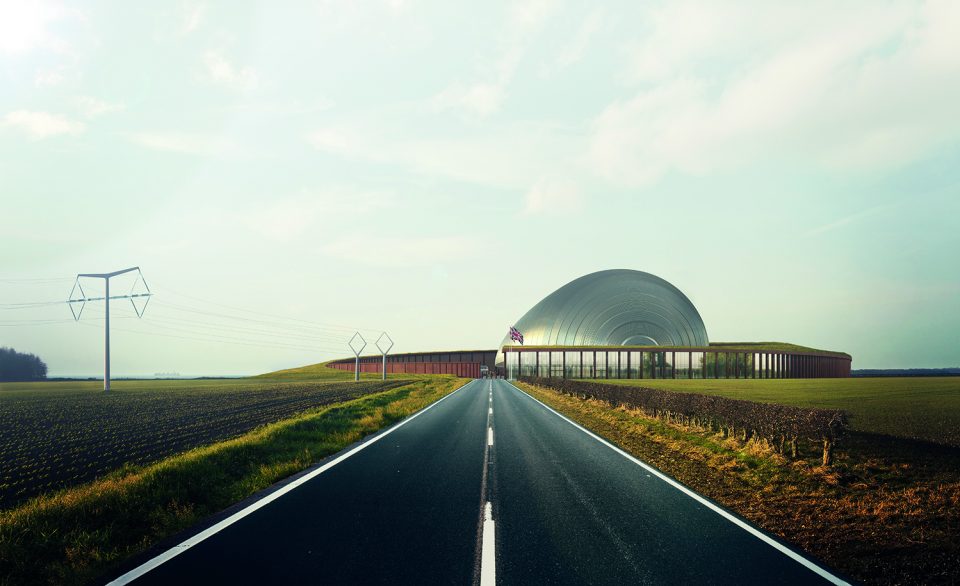Rolls-Royce betting small is beautiful when it comes to UK nuclear power

For many, nuclear power stations are eyesores – great slabs of gun-metal grey cluttering up the UK’s coastlines. But that could be about to change.
Last year FTSE 100 blue-bloods Rolls-Royce announced it was planning on building a fleet of 16 so-called “small modular reactors” (SMRs) in a move that would shake up the UK’s nuclear landscape.
According to an artist’s impression, the engine-maker’s model will resemble a cross between an oversized woodlouse and an armadillo – a far cry from the behemoths to which we have become accustomed.
“Effectively, what we’re doing is building a nuclear power station in a factory”, explains Tom Samson, the chief executive of the consortium developing Rolls’ SMR.
“That’s what’s unique about this project”.
Unlike other SMR projects, Rolls-Royce elected not to tamper with the nuclear technology itself, focusing instead on how it could make the project as low-cost as possible by building it in individual pieces.

Samson explains: “By using a factory-based environment, we can use all the latest technology to commoditise the building process. That means that we can use what we learn on every single piece that comes out.”
When all the pieces are ready, they are loaded onto trucks and delivered to site, where they are then assembled – just like the modular building techniques widely-used in construction today.
It all sounds rather painless, and it doesn’t take long for costs to come down either. The initial plants, Samson says, will cost around £2.2bn, but by the fifth model, that price has come down to £1.8bn.
Compared to the decades-long process of building big nuclear power stations such as Hinkley Point C in Somerset – now estimated to cost £22bn – and you can see why the project is gathering fans fast.
Among these is the UK government, which in November put £215m into the project – and will be matched by £300m by the private sector.
This is another huge advantage of the SMR, says Samson. Unlike large-scale nuclear, where costs are so high that building them without government support is very difficult, Rolls-Royce’s model is designed to be a magnet for private investment.
“We’re not looking for the government to stick its balance sheet behind this after the initial investment. What we’ve got is a very efficient capital deployment programme that minimises the role of government in getting it to market.”
Before the Open: Get the jump on the markets with our early morning newsletter
So when might we see these SMRs in action? Samson is bullish that the first could be on the grid by the start of the 2030s.
“This is not a reality for the future – this is a reality for now”, he said. “When we get an order, we can get the first one on grid in 10 years.”
Power surge calls for new nuclear solution
With renewable energy making up more and more of the UK’s power supply by the day, many have questioned whether nuclear power has had its day.
But for Samson, there’s no doubt. “By 2050, we are probably going to need double the amount of power to support all the new electrification activity that’s going to happen in this country.
“Renewables are intermittent – what nuclear gives you is dependable, reliable, constantly available clean energy that can be run all day.”
The Committee on Climate Change – the government’s leading advisers on the energy transition – agrees, saying the UK should aim for 10 gigawatts of new nuclear power by 2035.

Crucially, it’s no more expensive. Samson estimates that the price of power from his SMRs will be between £40 and £50 per megawatt-hour – roughly the same as that paid for renewables, and half the cost of power from Hinkley Point.
And embracing the technology could also lead to a jobs boom at a time of uncertainty for the UK’s manufacturing industry.
Rolls-Royce estimates that over the next five years the programme will create 6,000 jobs – but over the next 20 years, when the project has been scaled up, this could rise to as many as 40,000 jobs.
The economic benefits could yet be greater, says Samson, with several foreign countries already in discussions with the consortium over the technology, including Turkey, the Czech Republic, and Poland – all nations with high carbon footprints but limited renewables resources.
“This is probably first time in probably five decades that we have a nuclear solution here in the UK, so the export potential is huge”, he said.
“We are a leading edge country when it comes to innovation and if we get behind this technology then other countries will follow suit.”
Ultimately, says Samson, it’s time to start preparing the ground to make sure the rollout of the SMRs can be as smooth as possible when the orders start coming in.
“Our programme is not dependent or conditional on any large project going ahead. We’ve got a solution and design and an ability to create a supply chain that could be self-sufficient, and we’re ready to go.”
As far as Samson is concerned, smaller really is better.